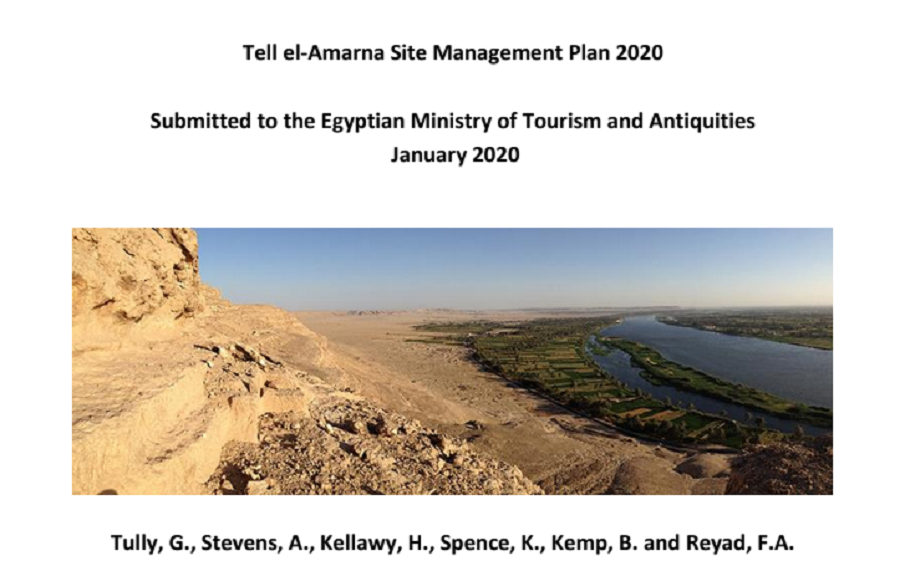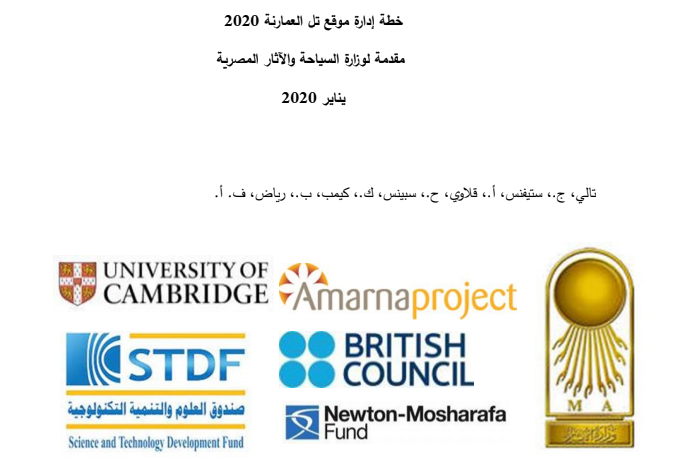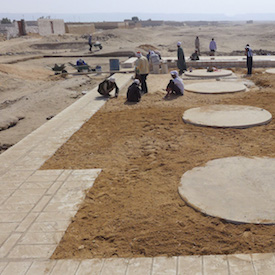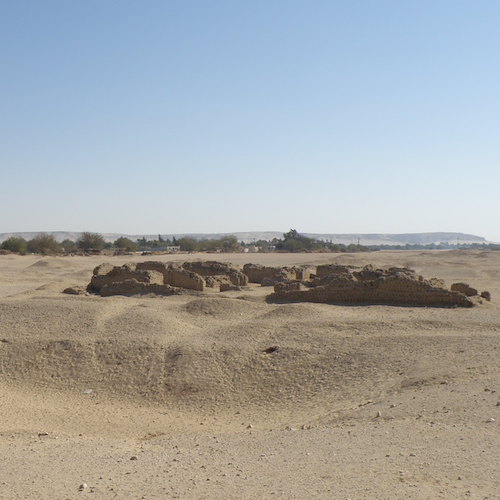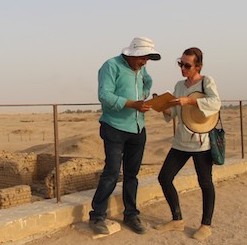Integrated Management Plan for the Amarna Archaeological Site
Archaeological sites around the world are threatened by factors such as climate change, population growth, tourism, development, urbanization, pollution, vandalism and looting. Site management plans are essential for both the conservation of heritage and to address the needs and impacts of contemporary life, such as demands for land, tourism and sustainable development.
The newly developed Amarna Site Management Plan (الإنكليزية - English) / (العربية - Arabic) خطة إدارة موقع تل العمارنة outlines a best practice vision for the archaeological site and its surroundings. The plan was developed by the Egyptian Ministry of Tourism and Antiquities and the University of Cambridge as part of the Institutional Links Heritage Project in partnership with local stakeholders.
Amarna is not just an ancient Egyptian archaeological site—it is home to many thousands of people. The three largest towns on the site are Tell Bani Amran (El-Till), El-Hagg Qandil, and El-Ammariyya. Although they appear on maps from the end of the 18th century AD, little is known of their origins. The area was named Amarna after the Beni Amran tribe, one of many Arab tribes that settled in the region in recent centuries. They seem to have been present in the area before 1737, when the district was already associated with the name Beni Amran or Amarna. The tribe split into several groups that make up the settlements of the area today. The Arabic word tell means ‘hill’ or ‘elevated place’ and refers to the position of the villages in one line between the cliffs of the high desert and the Nile River, the lifeline of the area.
A vivid account of the contribution of local communities to the exploration of Amarna is provided by Mary Chubb, secretary to the Egypt Exploration Society, in her book Nefertiti Lived Here (1954), which chronicles her experience of the excavation of Tell el-Amarna in the 1930s . Her book stresses how much the early excavators relied on a large team of support staff, including men, women and children from the local communities of Tell Beni Amran (El-Till) and El-Hagg Qandil, who were employed as excavators, cooks and assistants during the field seasons.
During the course of the excavation history of Amarna the role of local residents as custodians of the site and the infrastructure has steadily grown in importance and as such is reflected in the scope of the Amarna Site Management Plan.


